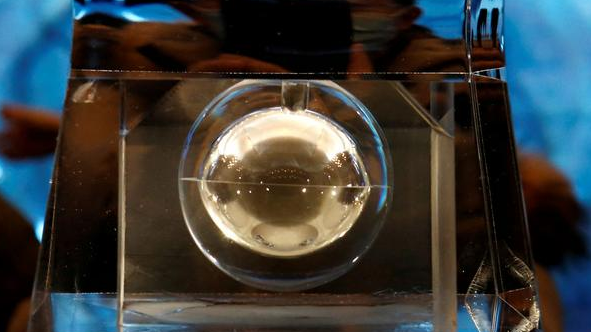Scientists have found water in glass beads recovered from the Moon by the Chinese Chang’e-5 spacecraft.
According to the study, which was published in Nature Geoscience, the Moon stores around 270 quadrillion kilos of water among microscopic glass beads.
The study proposes that this stored water may be recovered and utilized by humans on future lunar expeditions.
Why is this tale significant?
Recent data from lunar exploration missions contradicts long-held ideas that the Moon is devoid of water.
Intriguingly, ISRO’s Chandrayaan-1, India’s first lunar expedition, also found evidence of the existence of water on the Moon.
The Moon mineralogy mapper sensor onboard the spacecraft identified diagnostic absorption bands of water on the lunar surface.

How are glass beads made on the lunar surface?
Without an atmosphere, the Moon is susceptible to meteorite strikes. Theoretically, these assaults result in the creation of glass beads on the Moon’s surface.
The heat caused by the impacts of space rocks with the lunar surface causes the surrounding surface material to melt, which eventually solidifies as beads.
How do molecules of water develop on the Moon?
These beads capture water, which is made up of hydrogen and oxygen molecules.
According to Mahesh Anand, co-author of the paper, the solar wind is the source of the hydrogen required to produce water. Solar winds are charged particles released by the Sun.
Oxygen is very plentiful, prevalent in lunar rocks and minerals, and constitutes almost half of the Moon’s composition.
How can you remove water from the glass beads?
According to experts, the interaction of solar winds with the lunar surface might lead to a sustained lunar cycle on the Moon.
The scientists examined 117 glass beads obtained from the Moon by the Chang’e-5 mission for the study.
According to Anand, around 100 degrees Celsius of heat would be adequate to extract the water from the glass beads.
Chang’e-5 is a lunar mission.
In December 2020, the Chang’e-5 lunar mission sent back around two kg of lunar rock pieces and dust.
Chang’e-5 landed in a region of the Moon that had not been previously explored by US or Soviet missions.
The Chinese expedition gathered the youngest lunar rocks ever discovered, which were distinct from those previously brought to Earth.
